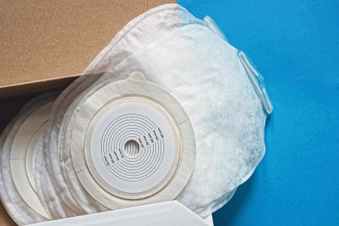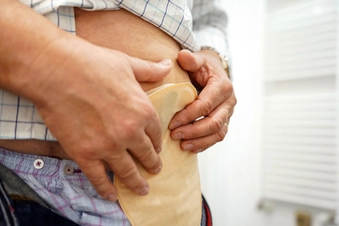Tips and Tricks to Thrive With an Ostomy

Watch What You Eat
Foods that are hard to digest or have a lot of roughage may lead to blockage problems. Common culprits are coconut, corn, mushrooms, nuts, raw fruits, and vegetables. Try to limit these foods to ease your digestion.

Lower Your Output
A few diet tricks may lower your output. Eat small, frequent meals and snacks. Have less sugar. Choose complex carbohydrates like bread, pasta, potatoes, and rice. Drink fluids after you eat. Avoid drinking water without food.

Look for Ostomy-Friendly Clothing
Try loose-fitting clothes or clothes with a high or loose waistband. Stretchy underwear or jockey shorts may give you added support. Choose swimsuits with linings or room to wear stretchy underwear underneath. For a better fit, try ostomy paste or a support belt.

Plan for Travel
Pack extra supplies. Double what you think you may need. Bring an extra pouch in your carry-on bag. If you travel internationally, bring diarrhea and fluid loss medications – and a note from your doctor saying you need to travel with ostomy supplies and medication.

Try Different Pouches
Things change, and so can your pouch. Your stoma may shrink over time, so you may need a pouch with a smaller opening. Or you may want to try a new pouch that works better with your skin or your lifestyle. You have many options. Talk to your ostomy nurse about what to try next.

Empty Your Pouch Regularly
To prevent messy leaks, empty your pouch before it gets too full. Aim for one-third to one-half full. Do it before you leave the house, especially if you’re not going to have a convenient bathroom. You can also do it at a set time every day, like first thing in the morning.

Know When to Change Your Pouch
If you keep a pouch on too long, it may damage your skin. If you switch pouches too often, it may irritate or damage your skin. Most pouches need to be changed every 3-7 days. If you start to feel itching or burning, change it right away.

Take Care of Your Skin
Be gentle on the skin around your stoma. Try cleaning it with just water or a very mild cleanser that doesn’t have oils or scents. Avoid using creams, lotions, ointments, powders, rubbing alcohol, and wipes near your stoma. Talk to your doctor if you have irritation, a rash, or redness.

Exercise With Care
Make sure your pouch is secure before you exercise. If you sweat a lot, or do activities like hot yoga or outdoor sports in hot weather, try an ostomy wrap or guard to keep it secure. Your pouch is water-resistant and made to avoid leaks, so swimming is fine. Try to empty it before you step into the pool.

Minimize Odor
A few tricks can keep odor at bay. Empty your pouch regularly. Make sure it has a good fit. Watch how your body reacts to odor-causing foods like asparagus, beer, broccoli, fatty foods, fish, garlic, and processed foods. Try odor-eliminating drops, gels, tablets, or filters that are safe for an ostomy.

Be Prepared for Accidents
Leaks happen. Be prepared by stashing extra supplies and a change of clothes at your workplace, in your car, or where you’re staying.

Go Back to Work With Confidence
Ask your doctor what to do to protect your stoma at work. If you recently had surgery, ask if you can go back gradually. If you need a special bathroom or a lot of breaks, consider talking to your human resources department. Keep a change of clothes and supplies at your desk or in your locker.
Show Sources
IMAGES PROVIDED BY:
1) DigitalVision/Getty Images
2) E+/Getty Images
3) E+/Getty Images
4) OJO Images/Getty Images
5) iStock/Getty Images
6) iStock/Getty Images
7) iStock/Getty Images
8) iStock/Getty Images
9) E+/Getty Images
10) iStock/Getty Images
11) E+/Getty Images
12) DigitalVision/Getty Images
SOURCES:
Crohn’s & Colitis Foundation: “Ostomy Tips and Tricks.”
United Ostomy Association of America: “Living with an Ostomy: FAQs.”
University of Texas Southwestern Medical Center: “Acceptance after ostomy surgery: Tips for travel, relationships, and much more.”